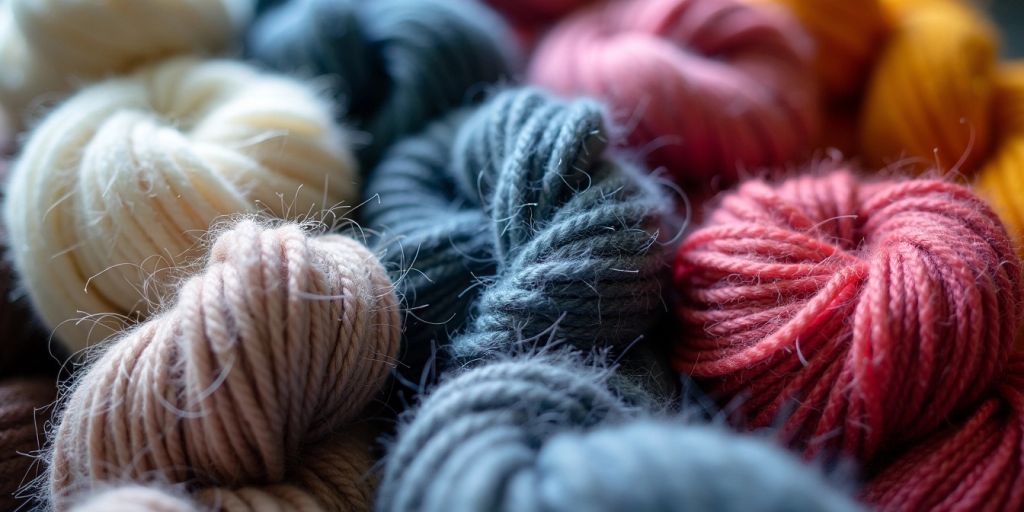Discovering the Numerous Kinds Of Cashmere an All-natural Fiber for Ultimate Luxury
Cashmere, an all-natural fiber, is often associated with high-end and convenience. The extra economical Chinese cashmere, the standard Scottish variant, and the high-end Italian blend, all inform a various tale of this impressive fiber.
Understanding the Glamorous Nature of Cashmere
Cashmere, often related to luxury and comfort, holds a distinct appeal worldwide of all-natural fibers. This soft, lightweight material is fancied for its phenomenal heat and impressive resilience. Unlike other natural fibers, cashmere combines insulation with breathability, offering unrivaled comfort across differing temperature levels. Its glossy surface and soft structure add to its high-end appeal, justifying the premium cost that commonly includes cashmere garments. Furthermore, cashmere's fundamental crease resistance and elasticity enhance its desirability, making it a preferred selection for costs clothes and accessories. Regardless of its fragile appearance, cashmere possesses a shocking strength, able to keep its shape and glamorous feel over time. This one-of-a-kind blend of characteristics seals cashmere's setting as a symbol of elegance and extravagance.
Simply What Is Cashmere and Where Does It Come From?

Given these outstanding high qualities, one could wonder regarding the beginning and makeup of this extravagant fiber. Cashmere is derived from the soft undercoat of cashmere goats, mostly found in Mongolia, China, Iran, and Afghanistan - is cashmere a natural fiber. These goats are adapted to rough climatic problems, producing an incredibly great, soft underfur as a defense against the bitter cold. This underfur, or undercoat, is what is collected for cashmere. Each springtime, when the goats naturally dropped their winter months coat, farmers comb out the great underhair, leaving the coarser hair behind. This meticulous process adds to the deficiency and high cost of cashmere. With its beginning in the rough landscapes of Asia, cashmere is a testament to nature's capacity to generate luxury from hardship.
Translating the Different Sorts Of Cashmere
Comprehending the various kinds of cashmere is key to appreciating the quality and distinct attributes of this lavish textile. Usually, cashmere is classified right into 3 kinds: raw, virgin, and reused. Raw cashmere is directly gotten from the goat and is unrefined. This kind usually has impurities such as dust and crude hair. Virgin cashmere, on the various other hand, is the pure, unrecycled product that is spun into yarn for the initial time. It is the softest and most luxurious. Recycled cashmere is made from virgin material that has been formerly used. It is re-spun and used in creating lower-cost cashmere items. Translating these kinds is the very first next step in understanding the exclusivity and worth of cashmere.

The Unique Qualities of Each Sort Of Cashmere
Having checked out the various groups of cashmere, it emerges that each type boasts its distinct set of qualities. Mongolian cashmere, for example, is renowned for its remarkable top quality, as a result of Mongolia's harsh winters that produce longer and finer fibers. Conversely, Chinese cashmere is frequently much more budget-friendly, though its much shorter fibers can minimize longevity. Scottish cashmere is celebrated for its exquisite softness, a result of the traditional water washing process using Scotland's soft water. Italian cashmere, meanwhile, is famous for its masterful blending and coloring methods, making it dynamic and flexible. Lastly, Indian cashmere, likewise called Pashmina, is valued for its unbelievable agility and warmth. Each type, hence, contributes to the fabric's online reputation for high-end.
Why Cashmere Is the Embodiment of Deluxe in vogue
Cashmere holds a prestigious placement in the globe of style, pertained to as an icon of deluxe and refinement (is cashmere a natural fiber). Cashmere is derived from the fine undercoat of Himalayan goats, known for their exceptional quality fiber. Cashmere's unrivaled comfort and resilience make it a popular material in the creation of high-end garments.
The Refine of Making Cashmere: From Goat to Garment
The trip of cashmere, from being an undercoat of a Himalayan goat to a lavish garment, is an intricate one. With the advent of springtime, farmers in Mongolia and China accumulate the woollen by brushing the goats, making sure no damage is done. The acquired wool is composed of rugged outer hair and soft downy undercoat. This blend is after that meticulously separated, with just the soft down Learn More Here made use of for cashmere. This raw cashmere is cleaned, dyed and rotated right into yarn. The thread is after that woven or knitted right into materials. The final action includes washing and pressing to provide the fabric its characteristic softness and heat. From goat to garment, each step is a testament to the perseverance, skill and artistry associated with crafting cashmere.

Final Thought
Finally, cashmere, with its all-natural style and unmatched comfort, rules supreme worldwide of luxury style. The diversity in kinds, varying from click reference the soft Mongolian, lightweight Indian Pashmina, budget friendly Chinese, typical Scottish, to the vibrant Italian, discloses the flexibility of this all-natural fiber. The scrupulous process of transforming it from a goat to a garment better adds to its exclusivity, making cashmere the embodiment of refinement and deluxe.
Cashmere, a natural fiber, is commonly associated with deluxe and convenience (is cashmere a natural fiber).Cashmere, frequently associated with luxury and convenience, holds an one-of-a-kind appeal in the world of all-natural fibers. Unlike various other natural fibers, cashmere combines insulation with breathability, providing exceptional comfort across varying temperatures. Cashmere is obtained from the soft undercoat of cashmere goats, mostly found in Mongolia, China, Iran, and Afghanistan. Cashmere is obtained from the great undercoat of Himalayan goats, known for their premium high quality fiber